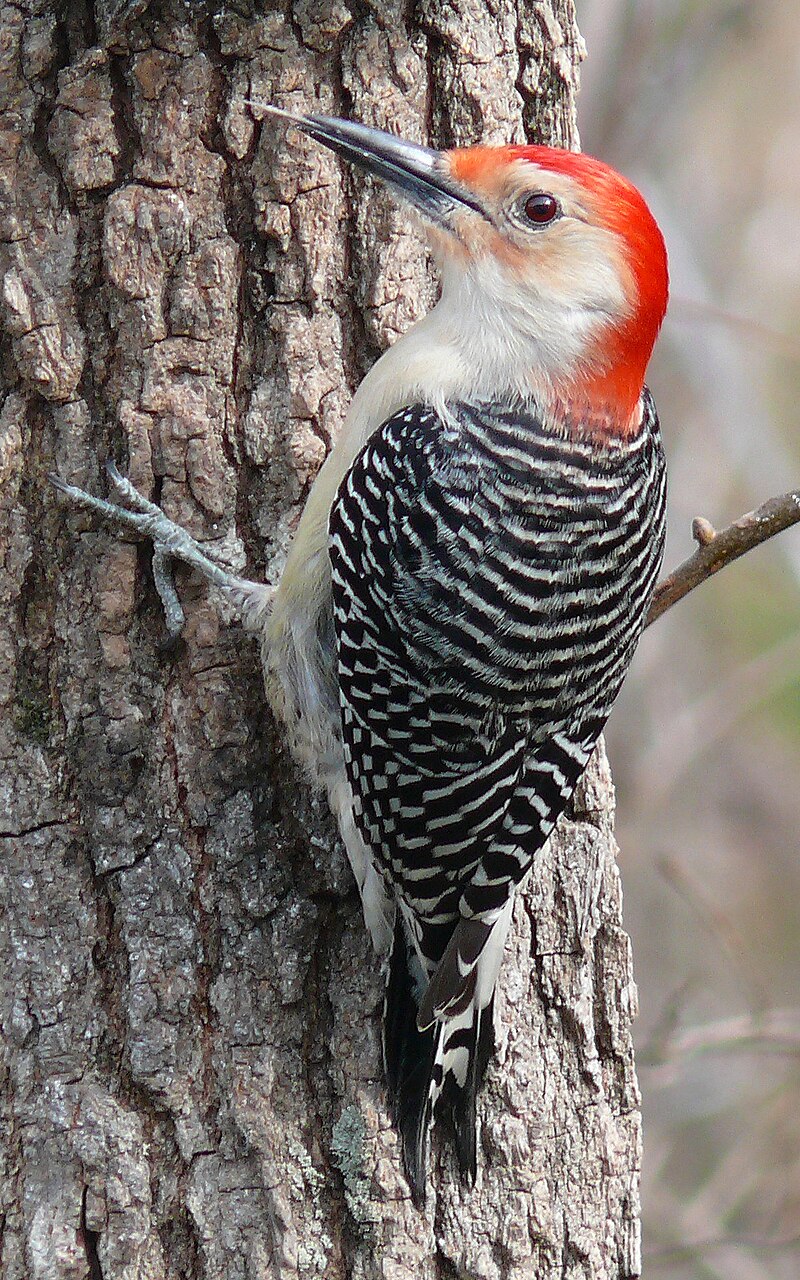Comprehending Woodpeckers in Florida: Behavior, Species, and Environments
Comprehending Woodpeckers in Florida: Behavior, Species, and Environments
Blog Article
Woodpeckers Unleashed: Discovering the Wonders of These Proficient Tree Climbers
Woodpeckers, with their unique markings and balanced drumming echoing through wooded areas, hold an unique place in the bird world - Woodpeckers in Florida. As we delve into the complex details of woodpeckers' nesting behaviors, feeding methods, and the ongoing preservation efforts to protect these amazing birds, a much deeper appreciation for their area in nature unfolds.
Anatomy and Adaptations
When examining the anatomy and adaptations of woodpeckers, one can observe exceptional attributes that enable these birds to thrive in their specialized ecological niche. Additionally, woodpeckers have zygodactyl feet, with two toes encountering onward and two encountering in reverse, providing a company grasp on tree trunks while they browse for food or drum for interaction.
Additionally, woodpeckers have an one-of-a-kind tongue structure that is long, barbed, and sticky, allowing them to draw out insects from gaps in timber. This customized adaptation enables woodpeckers to make use of a food resource that is hard to reach to numerous various other bird types. In general, the anatomy and adaptations of woodpeckers display the remarkable evolutionary services that have actually permitted these birds to prosper in their arboreal environment.
Drumming Habits
Having checked out the composition and adjustments of woodpeckers, the emphasis now changes to comprehending their drumming habits, an unique aspect of their interaction and territorial screens. Drumming is an essential type of interaction amongst woodpeckers, serving several functions such as establishing territories, bring in companions, and signaling alarm system. Each woodpecker species has an unique drumming pattern that helps people recognize members of their own varieties and differentiate them from competitors or killers.
Woodpeckers create drumming sounds by quickly pecking on powerful surfaces such as dead trees, utility poles, or perhaps metal things, creating a collection of rhythmic beats. The intensity and rate of drumming can vary based on the purpose; as an example, a quick drumming sequence may signify aggression in the direction of trespassers, while a slower and softer drumming pattern might suggest courtship (Woodpeckers in Florida). Additionally, woodpeckers might readjust the frequency and duration of their drumming to convey particular messages efficiently
Nesting Routines
Exploring the nesting routines of woodpeckers discloses fascinating understandings into their reproductive habits and habitat choices. Woodpeckers are understood for their special nesting choices, often excavating dental caries in trees to produce protected areas for elevating their young. These tooth cavities serve not only as a nesting website yet likewise as a protected haven from killers and harsh weather condition.
Woodpeckers show a high level of integrity to their nesting sites, commonly going back to the exact same area year after year. This habits highlights the value of ideal environment accessibility for their reproductive success. The option of a nesting website is crucial for woodpeckers, with aspects such as tree types, elevation, and decay phase playing considerable roles in their decision-making procedure.
Surprisingly, some woodpecker types are understood to excavate multiple dental caries within their area, offering themselves with alternate nesting alternatives. This strategy might serve as a type of insurance policy against potential dangers or disruptions to their key nesting site.

Feeding Techniques
Woodpeckers employ a range of specialized feeding techniques to my review here procure their main food resources. One of one of the most distinctive feeding behaviors of woodpeckers is drumming, which entails quick pecking on trees to reveal bugs under the bark. This drumming not only helps them locate victim yet likewise acts as a means of interaction with various other woodpeckers. Woodpeckers have strong, chisel-like beaks that enable them to drill right into timber effortlessly. Once an opening is created, they use their long, barbed tongues to remove pests such as ants, beetles, larvae, and crawlers. These tongues are covered with sticky saliva that helps catch the prey. Woodpeckers are additionally known to excavate tooth cavities in trees to access covert insect larvae or sap. Some varieties, like the acorn woodpecker, store nuts in specifically developed holes called granaries. This tactical storing of food helps them endure during food shortage periods. Woodpeckers are genuinely remarkable in their feeding strategies, showcasing flexibility and intelligence in obtaining their nutrition.
Preservation Efforts
Among the intricate feeding methods displayed by woodpeckers, the conservation initiatives focused on securing these remarkable birds play a critical role in protecting their habitats and populations. Woodpeckers face numerous dangers to their survival, consisting of habitat loss because of deforestation, climate adjustment modifying their ecosystems, and crashes with manufactured structures such as structures and vehicles - Woodpeckers in Florida. Preservationists are actively functioning to deal with these obstacles and ensure the lasting wellness of woodpecker species

Education and learning and public awareness projects are additionally essential parts of woodpecker preservation efforts. By increasing recognition regarding the significance of these birds in keeping healthy and balanced forest communities, guardians can amass support for habitat conservation campaigns and promote responsible land management techniques. you can try this out With joint initiatives in between scientists, policymakers, and regional areas, we can function with each other to safeguard a future where woodpeckers flourish in their all-natural environments.
Conclusion

Report this page